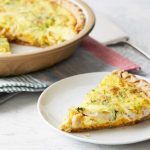When it comes to Italian cuisine, few dishes can rival the timeless appeal of Cacio e Pepe. And when you talk about the pinnacle of this classic Roman pasta dish, the name Roscioli inevitably comes up. In this comprehensive guide, we’ll delve into the world of Roscioli Roman Cacio e Pepe and explore everything you need to know about this dish, from its recipe to what pairs best with it.
Roscioli Roman Cacio e Pepe Recipe
Ingredients
To recreate the divine flavors of Roscioli Roman Cacio e Pepe at home, you’ll need the following ingredients:
- 400g of spaghetti or tonnarelli
- 150g of Pecorino Romano cheese (finely grated)
- Freshly ground black pepper (to taste)
- Coarse sea salt (for pasta water)
Preparation
Before you embark on the culinary journey, ensure that you have all the ingredients at hand. Here’s a step-by-step guide to preparing the dish:
- Boil the Pasta: Bring a large pot of water to a rolling boil. Add a generous pinch of coarse sea salt to the boiling water.
- Cook the Pasta: Drop the spaghetti or tonnarelli into the boiling water and cook until al dente. Remember, this is crucial for the perfect Cacio e Pepe.
- Grate the Cheese: While the pasta is cooking, finely grate the Pecorino Romano cheese. Freshly grated cheese is essential for the best results.
Cooking Instructions
- Create the Base: In a wide pan, preferably stainless steel, add a generous amount of freshly ground black pepper. Toast the pepper over low heat, allowing its fragrance to infuse the pan.
- Add Pasta and Cheese: Once the pasta is cooked, reserve a cup of pasta water and drain the rest. Add the hot pasta directly to the pan with toasted pepper. Stir well.
- Cheese it Up: Gradually add the finely grated Pecorino Romano cheese to the pasta while tossing it continuously. The cheese will melt and create a creamy sauce. If the mixture is too dry, add some of the reserved pasta water to achieve the desired consistency.
- Serve Hot: Plate the Cacio e Pepe immediately, garnishing it with an extra sprinkle of cheese and black pepper.
Now that you have the recipe down, let’s explore what pairs perfectly with this Italian delight.
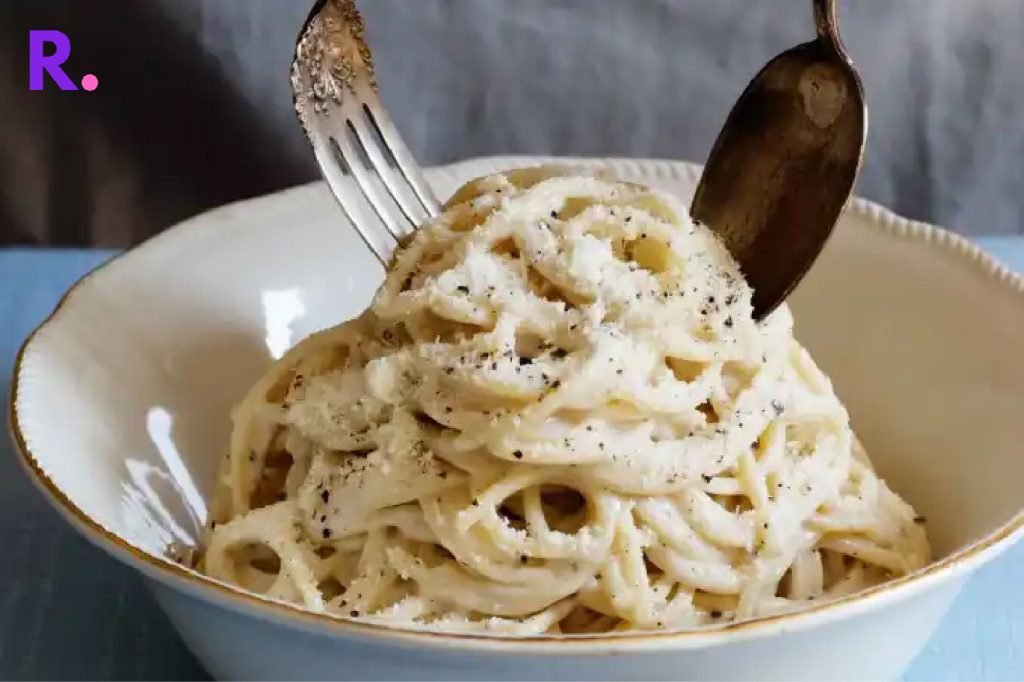
What to Serve with Cacio e Pepe?
Complementing Side Dishes
While Cacio e Pepe can stand alone as a satisfying meal, you can enhance your dining experience by serving it with some delectable side dishes. Here are a few ideas:
1. Bruschetta
A classic Italian appetizer, bruschetta, pairs beautifully with the creamy pasta. Top toasted bread with diced tomatoes, garlic, basil, and a drizzle of olive oil.
2. Roasted Vegetables
Roasted asparagus, broccoli, or Brussels sprouts add a delightful crunch and a healthy touch to your meal.
3. Caesar Salad
The freshness of a Caesar salad with its creamy dressing and crispy croutons complements the richness of Cacio e Pepe.
Wine Pairings
When it comes to beverages, consider these wine pairings to elevate your Cacio e Pepe experience:
1. White Wine
A crisp and refreshing white wine like Vermentino or Greco di Tufo complements the creamy pasta without overpowering it.
2. Red Wine
If you prefer red wine, a light and fruity option like a Pinot Noir can be surprisingly delightful with Cacio e Pepe.
3. Sparkling Wine
For a touch of elegance, serve your Cacio e Pepe with a glass of Prosecco. The effervescence cuts through the richness of the dish.
Dessert Options
To conclude your meal on a sweet note, consider these Italian desserts:
1. Tiramisu
A classic Italian dessert, tiramisu, with its layers of coffee-soaked ladyfingers and mascarpone, is a crowd-pleaser.
2. Cannoli
End your Italian feast with delightful crispy pastry tubes filled with sweet ricotta cheese.
3. Gelato
Gelato flavors like pistachio or hazelnut contrast with warm Cacio e Pepe.
You can also read our famous: Shepherdless Pie Recipe: A Flavorful Plant-Based Twist on a Classic Dish
Read the benefits [Here]
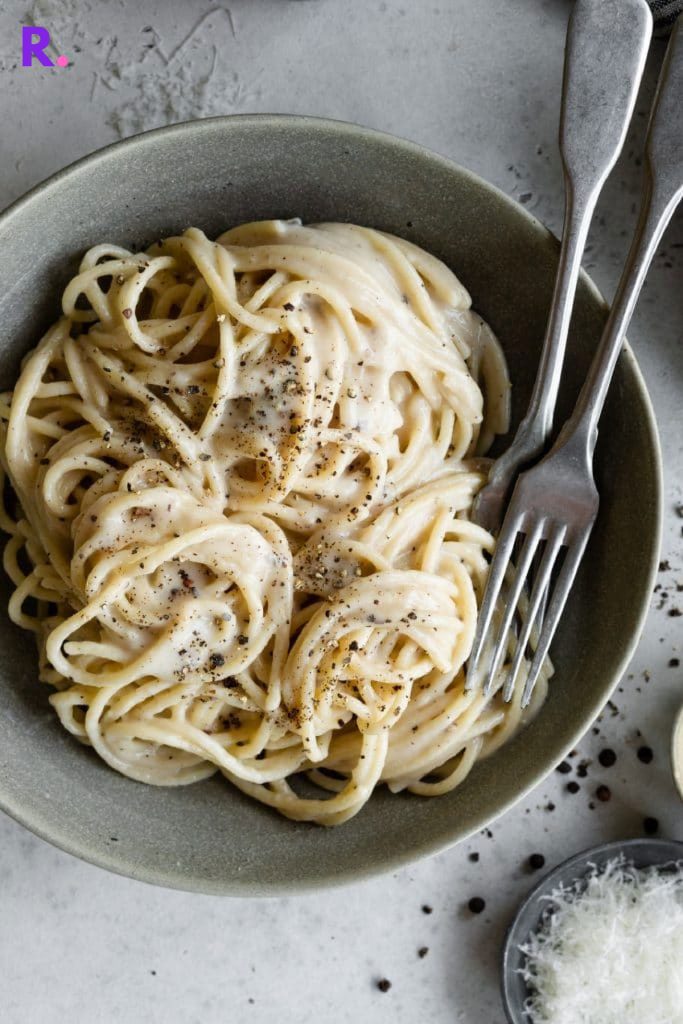
Roscioli Roman Cacio e Pepe
The Legacy of Roscioli
Roscioli is a famous bakery and restaurant in Rome. It is known for its exceptional Roman Cacio e Pepe. This establishment is family-owned. Its roots date back to 1824. Locals and tourists alike love it!
Why Choose Roscioli’s Cacio e Pepe
Those who have savored it hold Roscioli’s Cacio e Pepe very dear. Roscioli’s version stands out for its commitment to tradition and quality. They use Pecorino Romano cheese, black pepper, and artisanal pasta. The dish is rich, creamy, and super flavorful.
Some say the secret lies in their meticulous preparation and use of pasta water. Dine at Roscioli to taste Rome’s culinary history and experience the warmth and hospitality of a family rooted in their craft.
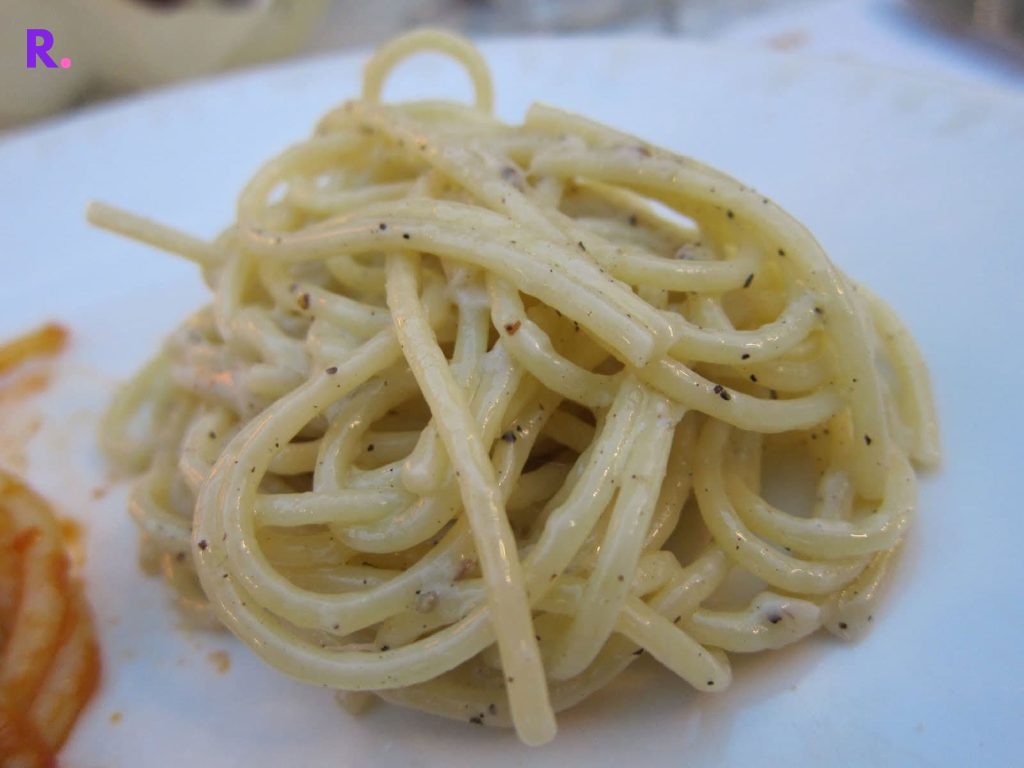
Cacio e Pepe vs. Carbonara
Rome loves Cacio e Pepe and Carbonara pasta dishes.They have key differences:
Cacio e Pepe:
- Cacio e Pepe requires pasta, Pecorino Romano cheese, black pepper, and salt.
- The sauce in Cacio e Pepe is made by emulsifying cheese with pasta water and black pepper. This creates a creamy, cheesy texture.
- Cacio e Pepe lacks extra protein, unlike Carbonara, which includes pancetta or guanciale.
- Cacio e Pepe has intense cheesy and peppery flavors.
Carbonara:
- Carbonara requires pasta, eggs, Pecorino Romano cheese, pancetta or guanciale, black pepper, and salt.
- The sauce in Carbonara is made by mixing eggs, cheese, and cooked pancetta or guanciale. It is creamier and thicker than Cacio e Pepe.
- Carbonara includes pancetta or guanciale. It enhances the dish with a savory, meaty flavor.
- Carbonara has a creamy, rich taste. It also has a hint of smokiness from pancetta or guanciale.
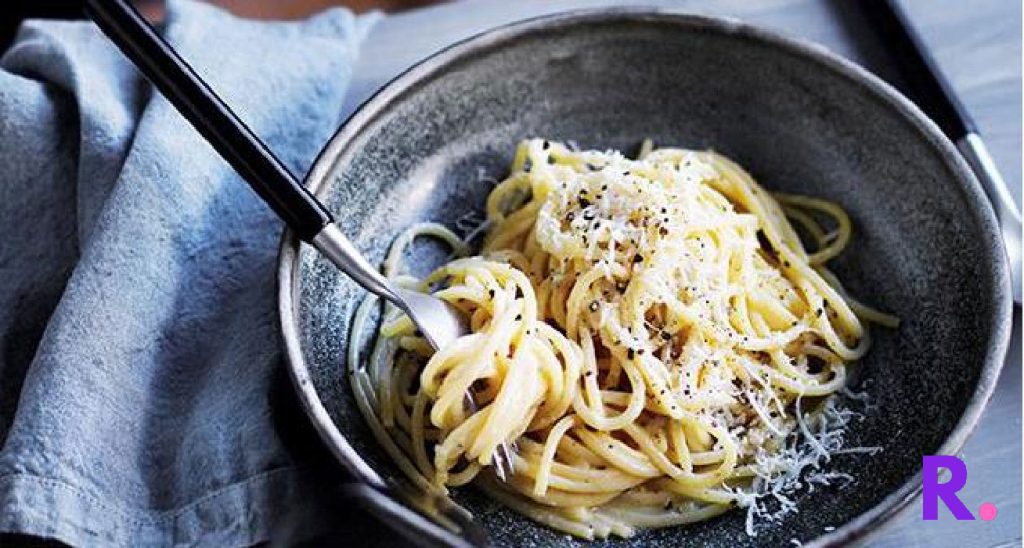
What Does Cacio e Pepe Taste Like?
Flavor Profile
Cacio e Pepe is simple. It reflects its flavor profile. The dish has these dominant features:
- The Pecorino Romano cheese is grated fresh and used generously. It gives every bite a rich and savory cheese flavor.
- The black pepper is ground freshly. It heats sharply and earthily. It cuts the creaminess of the cheese.
- The dish is seasoned with sea salt to enhance the savory taste.
Texture and Consistency
Cacio e Pepe has a crucial aspect: texture.
- The cheese and pasta water make a creamy sauce that clings to the pasta.
- Tonnarelli or spaghetti are perfectly cooked. They have a firm yet tender bite.
- Toasted black pepper flavors the dish and adds a delightful crunch.
Cacio e Pepe combines flavors of cream, cheese, and pepper with pasta cooked perfectly.
Roscioli Roman Cacio e Pepe highlights simplicity in Italian cuisine. This dish captures hearts and palates worldwide. It is creamy, cheesy, and peppery. Eat at Roscioli in Rome or cook Cacio e Pepe at home. It honors Roman culinary heritage and is a timeless delight!
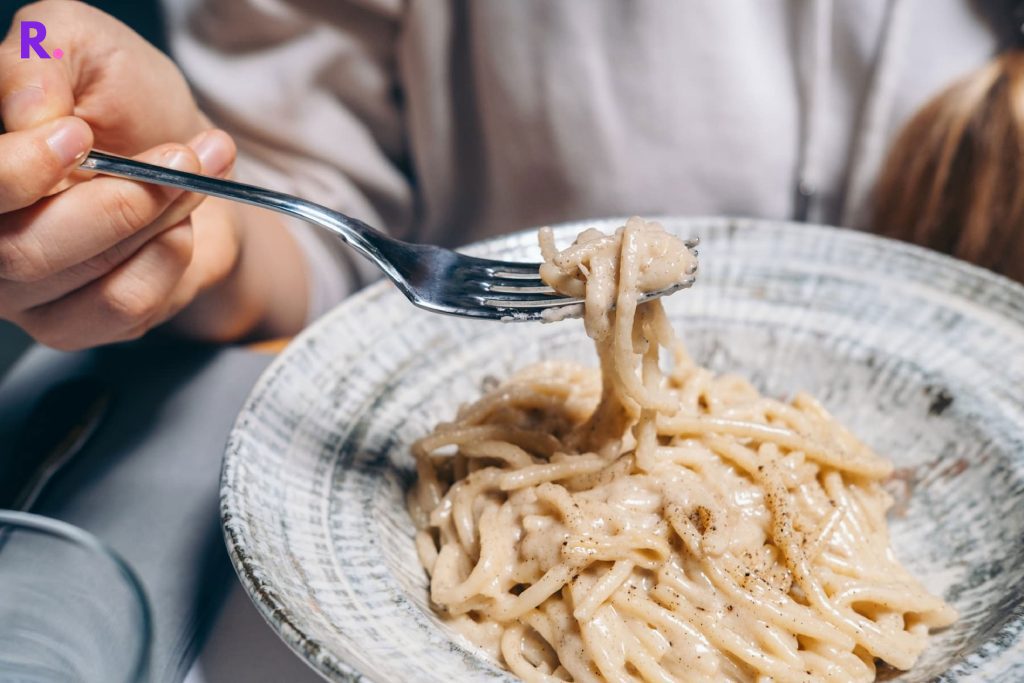
Frequently Asked Questions (FAQs)
Is Roscioli Roman Cacio e Pepe the same as traditional Cacio e Pepe?
Roscioli’s Cacio e Pepe is famous in Rome. Roscioli is known for its high-quality ingredients. Roscioli is known for its meticulous preparation. It follows Cacio e Pepe’s fundamental elements, making it outstanding.
Can I use Parmesan cheese for Cacio e Pepe instead of Pecorino Romano?
Use Parmesan cheese if you can’t find Pecorino Romano. Parmesan has a milder flavor. The dish may lack the sharpness of Cacio e Pepe.
What’s the secret to achieving perfect Cacio e Pepe sauce consistency?
The secret is to emulsify cheese and pasta water. Add grated cheese to the pasta while tossing it. Incorporate pasta water as needed. This will help achieve a creamy consistency.
Can I use gluten-free pasta for Cacio e Pepe?
You can make gluten-free Cacio e Pepe with gluten-free pasta. Follow the cooking instructions on the gluten-free pasta package. Cooking times may vary.
Is Cacio e Pepe difficult to make?
Making Cacio e Pepe is simple, but achieving a perfect creamy consistency takes practice. Balance the cheese, pasta water, and olive oil.
How Do I Prevent Clumping of Cheese in the Sauce?
To avoid clumps, remove the pan from the heat before adding the cheese. Stir vigorously to create a smooth, creamy sauce.
What type of pasta is best for Cacio e Pepe?
Tonnarelli and spaghetti are the classic choices for Cacio e Pepe. The long, thin pasta shapes allow the creamy sauce to coat each strand evenly.







